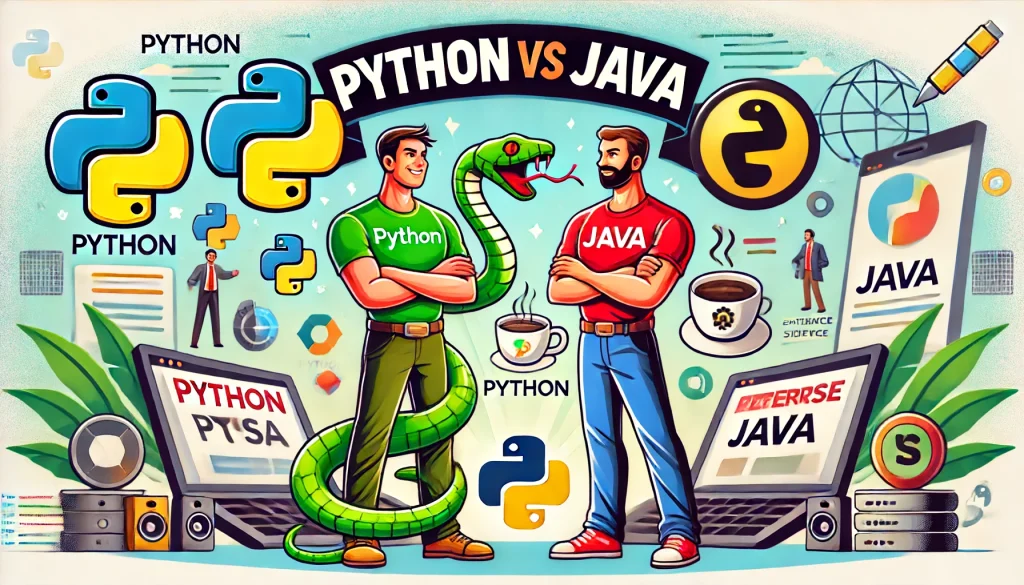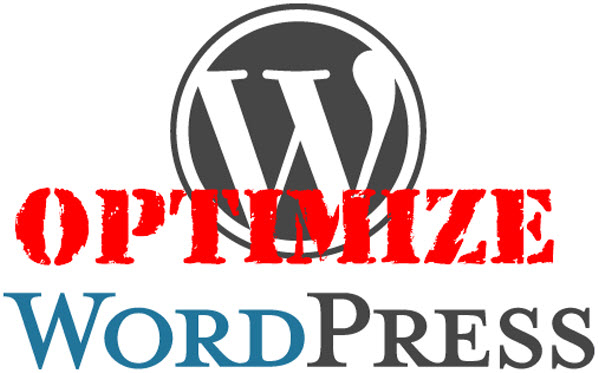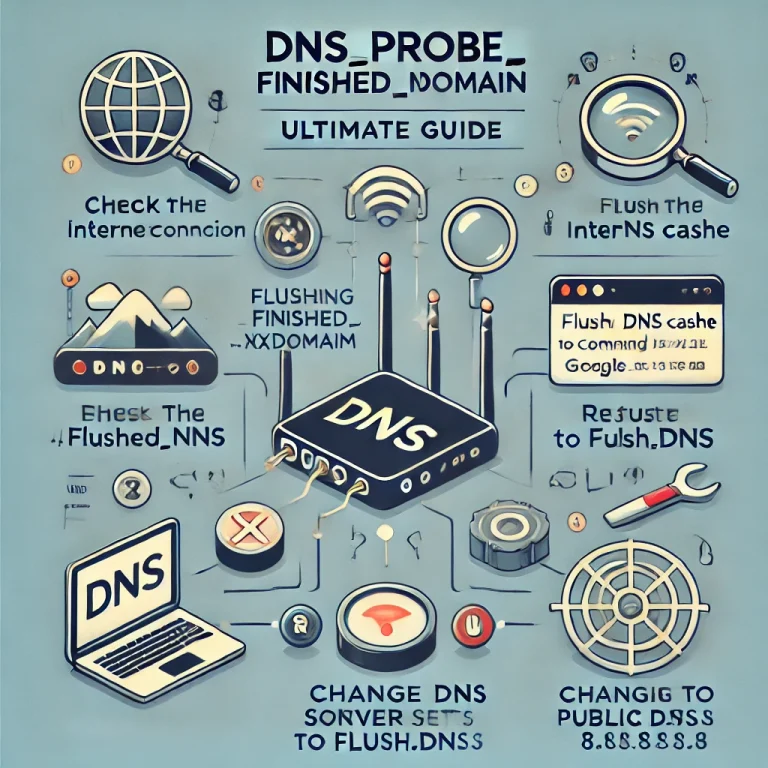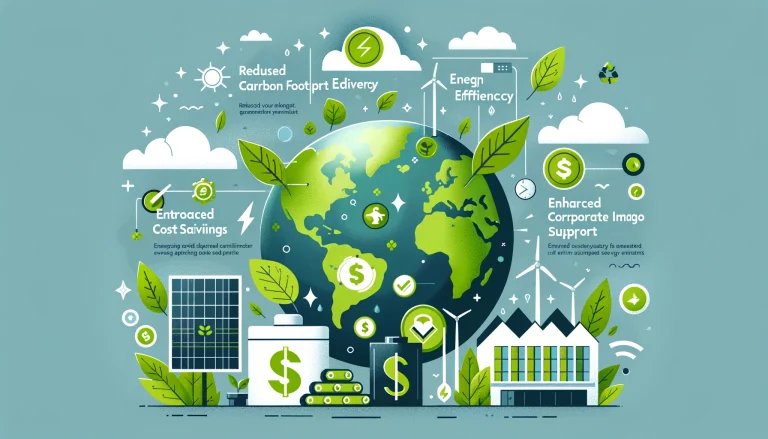Python vs Java: Comprehensive Comparison of Programming Giants

Table of Contents
Introduction
The debate between Python and Java has been a long-standing one in the programming world. Both languages boast powerful features, widespread use, and large communities of developers. Whether you’re a beginner trying to decide which language to learn or a seasoned developer considering switching languages, understanding the key differences and strengths of Python and Java can guide your decision-making process. This comprehensive comparison will delve into various aspects of these two programming giants, shedding light on their unique qualities and use cases.
Python vs Java
Introduction to Python
Python, created by Guido van Rossum and released in 1991, is known for its simplicity and readability. It has become the language of choice for many beginners due to its intuitive syntax and extensive library support. Python’s philosophy emphasizes code readability and simplicity, which makes it a favorite among developers for rapid application development and scripting.
Introduction to Java
Java, developed by James Gosling at Sun Microsystems and released in 1995, is renowned for its portability and robustness. Designed with the principle of “write once, run anywhere” (WORA), Java applications can run on any device equipped with the Java Virtual Machine (JVM). Java’s strong performance and scalability have made it a staple in large-scale enterprise applications.
Python vs Java: A Brief History
Python and Java have both evolved significantly since their inception. Python’s popularity surged with the rise of data science and machine learning, while Java has maintained a steady presence in enterprise environments. Understanding their historical context helps appreciate their current applications and future potential.
Popularity and Community Support
Popularity of Python
Python’s popularity has skyrocketed in recent years, largely due to its use in data science, artificial intelligence (AI), and machine learning. According to the TIOBE Index and Stack Overflow surveys, Python consistently ranks as one of the most popular programming languages. Its versatility and ease of use attract developers from various fields.
Popularity of Java
Java has long been a dominant force in the programming world, particularly in enterprise settings. Its ability to handle complex, large-scale systems and applications keeps it relevant. Java remains a top choice for Android app development, web applications, and backend systems.
Community Support for Python
Python boasts a vibrant and supportive community. Numerous forums, user groups, and online platforms provide extensive resources for learning and troubleshooting. The Python Software Foundation (PSF) plays a pivotal role in the development and promotion of the language.
Community Support for Java
Java’s community is equally robust, with a long history of developer support. The Java Community Process (JCP) allows for collective input on language enhancements. Major tech companies contribute to Java’s ecosystem, ensuring continuous improvement and innovation.
Ease of Learning and Use
Learning Curve of Python
Python is often lauded for its gentle learning curve. Its syntax is straightforward and resembles natural language, which helps new programmers grasp fundamental concepts quickly. Python’s interactive shell and extensive documentation further simplify the learning process.
Learning Curve of Java
Java, while more complex than Python, provides a solid foundation in object-oriented programming (OOP). Understanding Java’s syntax and structure can be more challenging for beginners, but it offers a comprehensive introduction to programming principles and design patterns.
Use Cases for Python
Python’s flexibility makes it suitable for a wide range of applications. It’s extensively used in web development (with frameworks like Django and Flask), data analysis (with libraries like Pandas and NumPy), AI and machine learning (with TensorFlow and PyTorch), and automation tasks.
Use Cases for Java
Java excels in building large-scale, reliable, and secure applications. It’s the backbone of many enterprise-level systems, including financial services, e-commerce platforms, and government applications. Java’s robustness and scalability make it ideal for backend development and Android mobile app development.
Performance and Speed
Performance of Python
Python’s performance, while sufficient for many applications, is generally slower compared to compiled languages due to its interpreted nature. However, tools like PyPy (an alternative implementation of Python) and the use of Just-In-Time (JIT) compilation can improve performance.
Performance of Java
Java’s performance is one of its strong suits. As a compiled language running on the JVM, Java applications benefit from optimization techniques like JIT compilation, which enhances runtime performance. This makes Java suitable for high-performance applications.
Speed Comparison
In terms of raw execution speed, Java typically outperforms Python. However, the difference in speed might not be noticeable for many applications. Python’s speed can be a limitation in CPU-intensive tasks, whereas Java’s performance advantage is more apparent in such scenarios.
Syntax and Coding Style
Python Syntax
Python’s syntax is clean and readable, with a focus on simplicity. Indentation is crucial in Python, as it defines the structure of code blocks. This enforces a consistent coding style and reduces the likelihood of syntax errors.
Java Syntax
Java’s syntax is more verbose compared to Python. It requires explicit declarations and follows a strict OOP approach. While this can make Java code longer and more complex, it also provides clear structure and strong typing, which can be beneficial for maintaining large codebases.
Coding Style Differences
The coding style of Python emphasizes readability and simplicity, adhering to the principles outlined in PEP 8 (Python Enhancement Proposal). Java’s coding style, on the other hand, emphasizes clarity, consistency, and the use of design patterns. Both languages have well-established conventions that promote best practices in coding.
Frameworks and Libraries
Popular Python Frameworks
Python offers a rich ecosystem of frameworks and libraries. For web development, Django and Flask are widely used. In data science, Pandas, NumPy, and SciPy are essential. For machine learning, TensorFlow and PyTorch dominate. These frameworks streamline development and provide extensive functionalities.
Popular Java Frameworks
Java’s ecosystem includes robust frameworks like Spring, Hibernate, and Struts. Spring is particularly popular for building enterprise-level applications due to its comprehensive features and scalability. Hibernate simplifies database interactions, while Struts offers a framework for creating web applications.
Library Support
Both Python and Java have extensive library support, enabling developers to implement complex functionalities with ease. Python’s standard library is vast, covering many areas from web development to data processing. Java’s libraries are equally comprehensive, supported by a large community and corporate contributions.
Use in Web Development
Python for Web Development
Python is highly regarded for web development, primarily due to frameworks like Django and Flask. Django, a high-level web framework, encourages rapid development and clean, pragmatic design. Flask, a micro-framework, offers flexibility and simplicity, allowing developers to build web applications with minimal setup.
Java for Web Development
Java remains a powerhouse in web development, particularly for enterprise-grade applications. Frameworks like Spring and Struts provide robust solutions for building scalable, secure, and maintainable web applications. Java’s strong performance and reliability make it a preferred choice for backend development.
Comparison of Web Development Features
When comparing web development features, Python’s frameworks often prioritize ease of use and rapid development, making them ideal for startups and small projects. Java’s frameworks, while more complex, offer greater scalability and performance, suited for large-scale, mission-critical applications.
Use in Data Science and AI
Python in Data Science
Python is the undisputed leader in data science and AI. Its simplicity, combined with powerful libraries like Pandas, NumPy, and SciPy, makes it the go-to language for data analysis. Machine learning libraries such as TensorFlow, Keras, and PyTorch further enhance its capabilities, allowing developers to build and deploy complex AI models with ease.
Java in Data Science
Java is less commonly used in data science but still holds value, particularly in large-scale data processing environments. Frameworks like Apache Hadoop and Apache Spark, often implemented in Java, are crucial for big data applications. Java’s performance and scalability can be advantageous in data-intensive tasks.
AI and Machine Learning Applications
Python’s dominance in AI and machine learning is evident, with extensive support for building and training models. Java, while not as prevalent, offers tools like Deeplearning4j and Weka for machine learning tasks. Python’s ease of use and vast library support give it an edge in AI development.
Enterprise Applications
Python in Enterprise
Python is increasingly being adopted in enterprise settings, particularly for data analysis, automation, and web development. Its readability and rapid development capabilities make it a valuable tool for prototyping and building scalable applications quickly.
Java in Enterprise
Java has long been the backbone of enterprise applications, known for its robustness, security, and scalability. Many large organizations rely on Java for mission-critical systems, including financial services, e-commerce, and enterprise resource planning (ERP) systems.
Scalability and Maintenance
Both Python and Java offer scalability, but their approaches differ. Java’s static typing and structured code make it easier to manage and maintain large codebases. Python’s dynamic typing and simplicity facilitate rapid development, but maintaining very large Python applications can be challenging.
Mobile App Development
Python for Mobile Apps
Python is not commonly used for mobile app development. However, frameworks like Kivy and BeeWare allow for the creation of cross-platform mobile applications. These tools are more suitable for prototyping and simple applications rather than high-performance, resource-intensive apps.
Java for Mobile Apps
Java is the primary language for Android app development. The Android SDK, combined with Java’s performance and robustness, enables developers to build powerful and responsive mobile applications. Java’s extensive documentation and community support further aid in mobile development.
Cross-Platform Development
Cross-platform development can be achieved with both Python and Java, but they have different strengths. Java, through tools like Xamarin (C# and .NET based) and Cordova, offers solid solutions for building cross-platform apps. Python’s tools like Kivy, while less powerful, provide flexibility for simpler projects.
Development Tools and Environment
Python IDEs
Python developers have access to a variety of Integrated Development Environments (IDEs) and editors. Popular choices include PyCharm, Visual Studio Code, and Jupyter Notebook. These tools offer features like code completion, debugging, and visualization, enhancing the development experience.
Java IDEs
Java developers benefit from robust IDEs such as IntelliJ IDEA, Eclipse, and NetBeans. These environments provide powerful tools for coding, debugging, and testing, which are essential for building complex applications. Their support for various frameworks and plugins enhances productivity.
Development Tools Comparison
When comparing development tools, Python’s IDEs are often praised for their simplicity and ease of use, which is ideal for beginners and rapid development. Java’s IDEs, though more complex, offer comprehensive features that are crucial for large-scale enterprise development.
Job Market and Salary
Job Opportunities for Python Developers
Python developers are in high demand, especially in fields like web development, data science, and AI. Job portals and surveys indicate a growing number of opportunities for Python professionals, reflecting the language’s widespread adoption across various industries.
Job Opportunities for Java Developers
Java developers also enjoy a strong job market, particularly in enterprise environments and Android app development. Java’s enduring relevance ensures a steady demand for skilled developers, especially in large organizations that rely on Java-based systems.
Salary Comparison
Salaries for Python and Java developers vary depending on factors like location, experience, and industry. Generally, both offer competitive salaries, with Python developers often seeing higher pay in data science roles, while Java developers command strong salaries in enterprise and mobile development sectors.
Security Features
Python Security
Python offers several security features and best practices to safeguard applications. Libraries like Django include built-in security measures against common threats such as SQL injection and cross-site scripting (XSS). However, developers must be vigilant in following security guidelines and regularly updating dependencies.
Java Security
Java is known for its robust security features, including a strong typing system and built-in security manager. Java’s extensive security APIs and frameworks, such as Spring Security, provide comprehensive solutions for securing applications. Regular updates and adherence to best practices are essential for maintaining security.
Common Security Practices
Both Python and Java require developers to follow best practices to ensure application security. This includes regular updates, input validation, secure coding standards, and the use of security frameworks and libraries. Proactive security measures are crucial to protect against vulnerabilities and attacks.
Community Resources and Support
Online Resources for Python
Python developers have access to a wealth of online resources, including official documentation, tutorials, forums, and community-contributed content. Websites like Stack Overflow, GitHub, and the Python Package Index (PyPI) offer valuable support and code examples.
Online Resources for Java
Java’s extensive history has resulted in a rich repository of online resources. The official Oracle documentation, Java forums, and platforms like Stack Overflow and GitHub provide ample support. Java’s vibrant community ensures the continuous sharing of knowledge and best practices.
Community Engagement
Both Python and Java communities are highly engaged, organizing meetups, conferences, and hackathons. These events foster collaboration and learning, helping developers stay updated with the latest trends and technologies. Community involvement is a key aspect of both languages’ success.
Future Prospects
Future of Python
Python’s future looks promising, with continuous growth in data science, AI, and web development. Its simplicity and versatility ensure its relevance across various domains. Ongoing improvements and the development of new libraries and frameworks will further solidify Python’s position in the programming world.
Future of Java
Java’s future remains strong, especially in enterprise and Android development. The language continues to evolve, with regular updates and enhancements. Java’s stability and performance ensure its continued use in large-scale, mission-critical applications.
Industry Trends
Industry trends indicate a growing focus on data-driven technologies, AI, and cloud computing. Both Python and Java are well-positioned to thrive in these areas, with Python leading in data science and Java excelling in enterprise applications and backend development.
Python vs Java for Beginners
Why Choose Python as a Beginner
Python is an excellent choice for beginners due to its readable syntax and simplicity. Its extensive documentation, community support, and wide range of applications make it a versatile language to learn. Beginners can quickly build projects and gain confidence in programming concepts.
Why Choose Java as a Beginner
Java, while more complex, provides a strong foundation in object-oriented programming. Learning Java equips beginners with a deep understanding of programming principles, which can be beneficial for future learning and career growth. Java’s widespread use in enterprises offers numerous job opportunities.
Best Learning Resources
For Python, resources like the official Python documentation, online courses (Coursera, edX), and interactive platforms (Codecademy, LeetCode) are highly recommended. For Java, the official Oracle documentation, online courses, and platforms like Udemy and Pluralsight provide comprehensive learning materials.
Python vs Java in Academia
Python in Education
Python is widely used in academia for teaching programming and computer science concepts. Its simplicity makes it an ideal language for introducing students to coding. Many universities incorporate Python into their curricula for courses ranging from introductory programming to advanced data science.
Java in Education
Java also holds a significant place in academic settings, particularly in computer science and engineering programs. Its robust object-oriented design makes it a valuable language for teaching software development principles. Java’s inclusion in Advanced Placement (AP) Computer Science courses highlights its educational importance.
Curriculum Integration
Both Python and Java are integrated into educational curricula, offering students diverse learning experiences. Python’s use in data science and AI courses complements Java’s role in software engineering and enterprise development, providing a comprehensive programming education.
Corporate Adoption
Python in Corporations
Python’s adoption in corporations is on the rise, particularly in tech companies, financial institutions, and startups. Its use in data analysis, automation, and web development drives its corporate adoption. Companies like Google, Facebook, and Netflix utilize Python for various applications.
Java in Corporations
Java has a long history of corporate adoption, especially in large enterprises. Its use in backend systems, e-commerce platforms, and financial services is widespread. Major corporations like Amazon, LinkedIn, and IBM rely on Java for their critical applications.
Case Studies
Numerous case studies highlight the successful implementation of Python and Java in corporate environments. Python’s role in Netflix’s recommendation system and Java’s use in Amazon’s backend services showcase the strengths of both languages in real-world applications.
Conclusion
Choosing between Python and Java depends on various factors, including the specific project requirements, the developer’s experience level, and the intended application domain. Python’s simplicity and versatility make it ideal for rapid development and data science, while Java’s robustness and performance are crucial for enterprise applications and mobile development. Both languages have vibrant communities, extensive libraries, and strong future prospects, ensuring their continued relevance in the programming landscape.
FAQs
What are the main differences between Python and Java?
Python is known for its simplicity and readability, while Java is valued for its performance and scalability. Python is often used in data science and web development, whereas Java is preferred for enterprise applications
and Android development.
Which language is better for web development, Python or Java?
Python is excellent for rapid web development with frameworks like Django and Flask, ideal for startups and small projects. Java’s frameworks, such as Spring, offer robust solutions for large-scale, enterprise-grade web applications.
Is Python faster than Java?
Generally, Java outperforms Python in terms of execution speed due to its compiled nature and optimization techniques. However, Python’s speed is sufficient for many applications, and performance can be enhanced with tools like PyPy.
Which language should a beginner learn, Python or Java?
Python is recommended for beginners due to its simple syntax and ease of learning. Java, while more complex, provides a strong foundation in programming principles, beneficial for long-term career growth.
Can Python be used for mobile app development?
While Python is not commonly used for mobile app development, frameworks like Kivy and BeeWare allow for the creation of cross-platform mobile applications. However, these tools are better suited for simple applications.
What are the job prospects for Python and Java developers?
Both Python and Java developers enjoy strong job prospects. Python developers are in high demand in web development, data science, and AI, while Java developers find opportunities in enterprise environments and Android app development.






